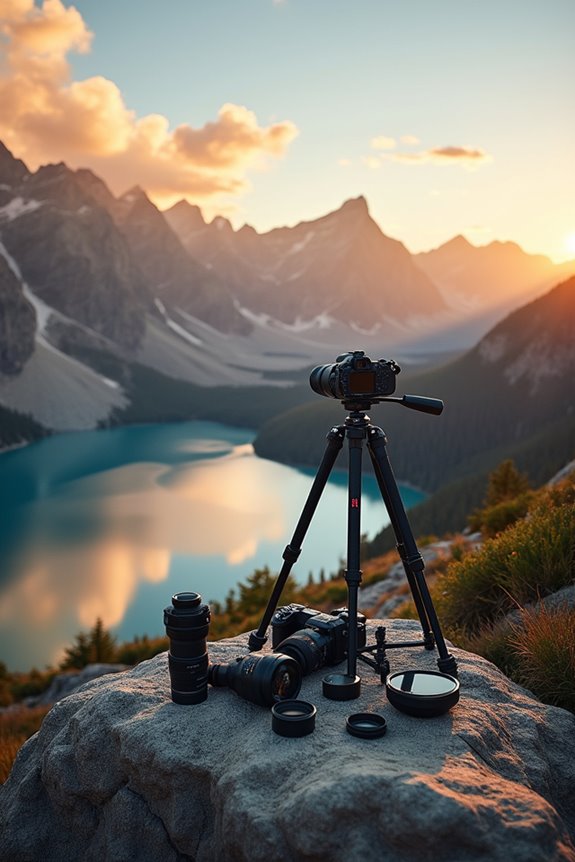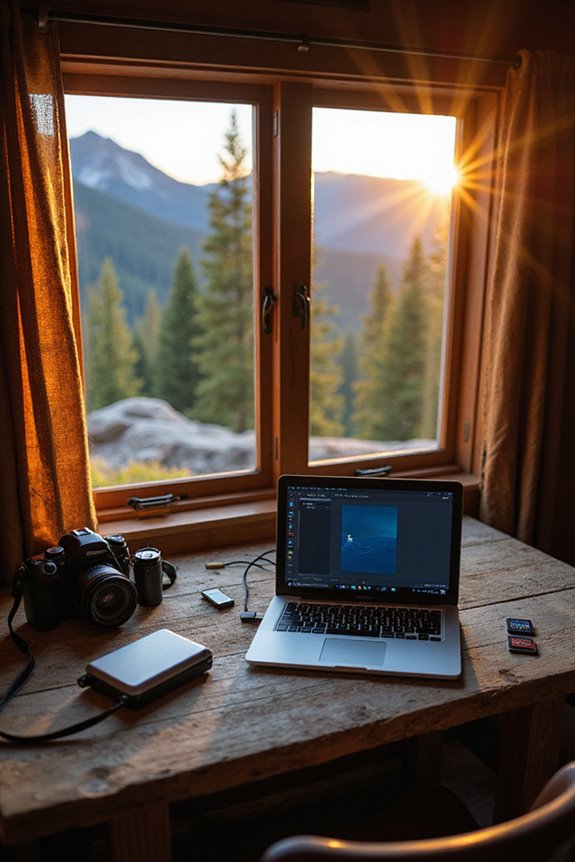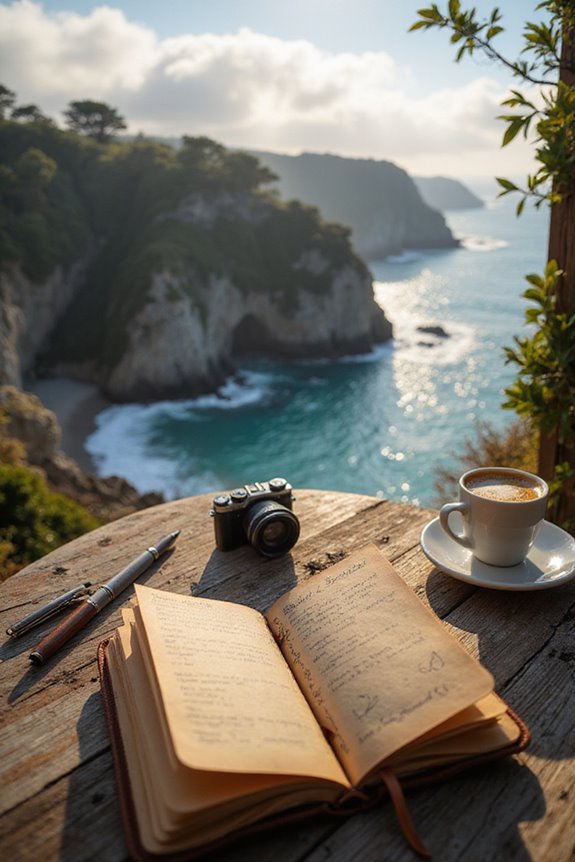When I’m out snapping shots while traveling, I’ve learned to keep a few legal things in mind. Copyright laws protect my images, so I make sure to know my rights. Getting model releases can save me headaches down the line, especially if I plan to sell a photo. Plus, understanding local rules about permits can avoid nasty surprises, like those restricted areas that feel like a photographer’s paradise. Stick around, and I’ll share more tips!
Key Takeaways
- Understand copyright laws to protect your images and ensure you have rights to reproduce and distribute your work.
- Secure model releases from individuals before using their likeness in your travel photography to avoid legal complications.
- Research local laws and regulations regarding photography in public spaces to respect privacy and avoid fines.
- Obtain necessary permits for photography in national parks or restricted areas to comply with local regulations and avoid legal issues.
- Be culturally sensitive and seek consent when photographing indigenous or religious communities to honor their privacy and dignity.
Understanding Copyright Laws and Photographer Rights
When I first picked up a camera, I didn’t realize just how important understanding copyright laws would be for my photography journey. I quickly learned that copyright ownership of my photos meant I had exclusive rights to reproduce, distribute, and display my work. That was a game changer! It felt empowering knowing I could control how my images were used, but it also meant I had to navigate licensing agreements carefully. For instance, if someone wanted to use my photo for their project, I could license it out, ensuring I got paid for my creativity. Plus, registering my work can make it easier to enforce my rights if needed. Understanding these laws made me feel more confident as I ventured into the world of photography.
Importance of Model Releases and Consent
While diving into the exhilarating world of travel photography, I quickly realized that securing model releases and obtaining consent from my subjects was just as essential as mastering my camera settings. You see, a model release is a legal contract that grants me permission to use my subjects’ images for specific purposes. It’s not just about snapping a photo; it’s about respecting their rights and building trust. Ethical consent means informing them how their images will be used, especially if I plan to sell or promote something. Imagine capturing a stunning portrait of a local artist—without their consent, I could face legal issues. So, I always keep clear, simple release forms handy to avoid any misunderstandings and guarantee everyone’s on the same page!
Navigating Photography in Public Spaces
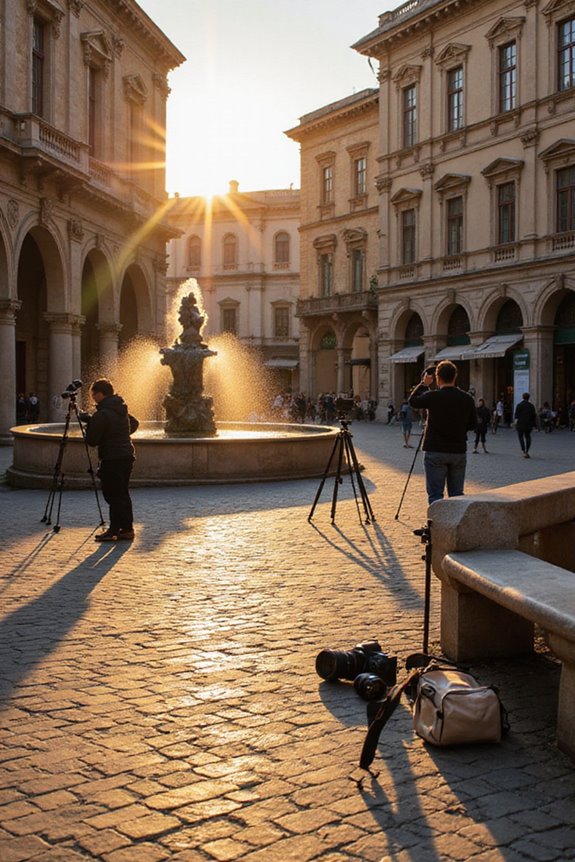
Maneuvering photography in public spaces can feel like walking a tightrope; on one hand, you’ve got the exhilarating freedom to capture the world around you, and on the other, you’re mindful of the legal boundaries that come into play. When I’m out doing street photography, I love the spontaneous moments that unfold in parks, sidewalks, or bustling plazas, where everyone’s got this implied consent to be part of the scene. Yet, I always remember that people have a reasonable expectation of privacy in their homes or private properties. So, while snapping away is usually legal, I stay aware of local rules, especially near sensitive areas like government buildings. After all, a little awareness keeps the creativity flowing without the legal headaches!
Permits and Restrictions for Photography Locations

Before diving into that perfect shot, it’s vital to think about the permits and restrictions that come with photography locations. I’ve learned the hard way that permit requirements can vary widely, especially on public lands. For instance, if you’re in a national park, you might not need a permit for small groups, thanks to the EXPLORE Act. However, larger groups or special equipment often trigger fees that can sting, ranging from $50 to $500. Plus, some locations have strict no-photography zones to protect wildlife or cultural sites. It’s important to research beforehand, or you might find yourself packing up your gear after a stern warning. Trust me, knowing the rules can save you from unexpected headaches!
Privacy and Ethical Considerations in Photography
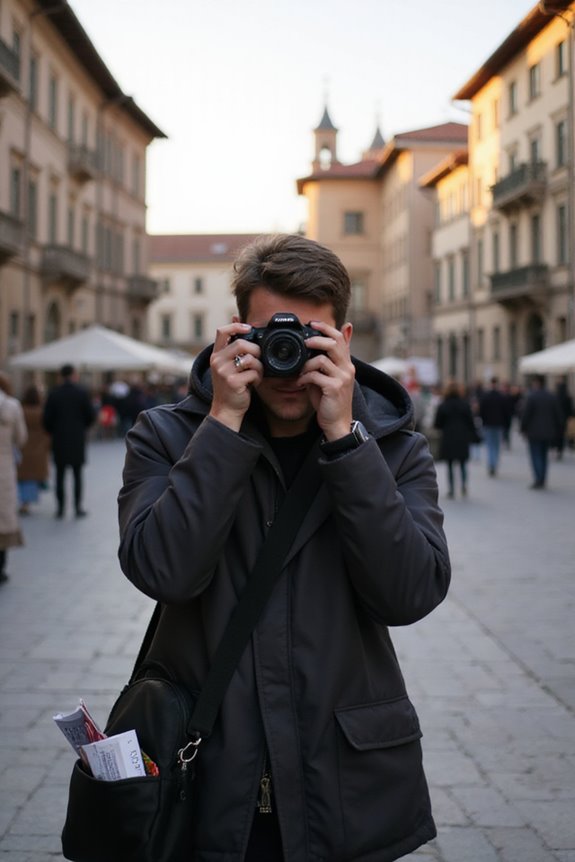
When you’re out capturing the beauty of a new destination, it’s easy to get swept away in the thrill of the moment, but respecting privacy and ethics should always be top of mind. I’ve found that cultural sensitivity is essential, especially when photographing in indigenous or religious communities. It’s not just about snapping a shot; it’s about understanding the stories behind those faces. Ethical dilemmas pop up when you realize that a seemingly harmless photo can offend or exploit someone. I always try to ask for permission, even if it’s not legally required. Remember, every click of the shutter has the power to uplift or diminish someone’s dignity. So, let’s be mindful and respectful, creating images that honor, not harm.
Legal Consequences and Best Practices for Photographers
Maneuvering the legal landscape of travel photography can feel like trying to solve a puzzle with missing pieces, especially if you’re not familiar with the rules in different countries. I remember snapping some stunning shots in a bustling market, only to find out later that a permit was required. Talk about stressful! Without the right documentation, you risk not just fines but serious legal liabilities, and believe me, equipment seizure isn’t a fun experience. Always get permissions, especially on private property and for commercial use. And don’t forget model releases for identifiable people; it saves you from potential legal claims. Stay informed about local laws, and you’ll avoid the headaches that can ruin a perfect travel photography adventure!
Frequently Asked Questions
Do Laws Differ for Photographing Street Art in Various Countries?
Absolutely, laws vary for photographing street art across countries. I’ve noticed that street art copyright and public space regulations can greatly impact what I can capture, especially when it comes to commercial use. Always check local laws!
How Does Drone Photography Impact Legal Considerations for Travel Photographers?
Did you know that over 40% of drone operators unknowingly violate drone regulations? As a travel photographer, I’ve learned to navigate privacy concerns carefully, ensuring I always respect laws while capturing stunning aerial shots.
Are There Specific Age Restrictions for Model Releases in Different Countries?
I’ve found that age restrictions for model releases vary by country. Generally, individuals under 18 need a parent or guardian’s signature. Always check local laws to verify compliance and avoid potential legal issues.
Can I Photograph My Hotel Room for Commercial Use Without Permission?
I can’t photograph my hotel room for commercial usage without permission. Hotel policies often require property releases to avoid legal issues. It’s essential to check with the hotel before using those images commercially.
What Should I Do if Someone Objects to Being Photographed?
If someone objects to being photographed, I always respect their wishes. I prioritize consent requirements and cultural sensitivities, often explaining my intent, but I’ll gladly delete the photo to maintain goodwill and avoid conflict.


